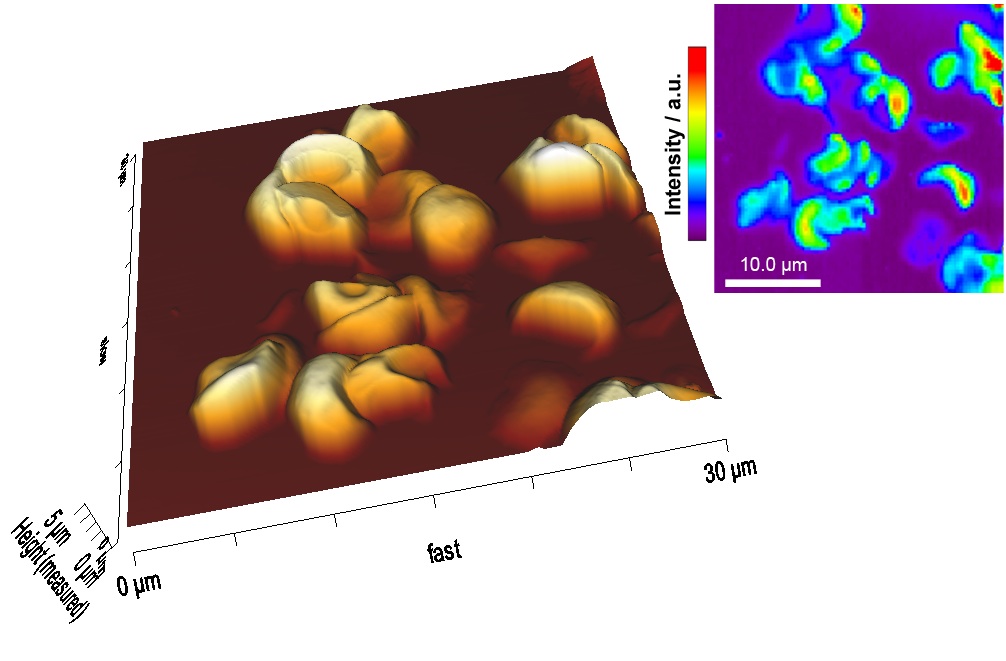'Iceman' Mummy Holds World's Oldest Blood Cells

The oldest red blood cells ever identified have been found in the body of Ötzi the Iceman, a 5,300-year-old mummy found in the Alps in 1991.
The bloody find is a first for Ötzi's mummy, which has been under scientific scrutiny since a pair of hikers stumbled over the body frozen in ice on the Austrian-Italian border. And the new research, published today (May 1) in the Journal of the Royal Society Interface, helps confirm the story of Ötzi's death.
The Iceman was so well preserved that scientists could estimate his age (about 45), his health, his last meals (they included red deer meat with herb bread) and even his probable cause of death, an arrow wound to the shoulder that sliced an artery. But no one had ever found blood cells in the ancient man's corpse.
Albert Zink, a biological anthropologist at the European Academy of Bozen/Bolzano, was the leader of the study that uncovered the elusive cells. "It was very surprising, because we didn't really expect to find compete red blood cells," Zink said. "We hoped to find maybe some remnants or shrunken red blood cells, but these are looking like a modern-day sample; the dimensions are the same." [Photos: See the face of Ötzi]
Feeling for blood
Zink and his colleagues took tissue samples from Ötzi's arrow wound and from an earlier wound on the mummy's hand. Using a light microscope, they identified round objects that looked a bit like red blood cells, Zink said. But to be sure, the researchers needed more advanced technology.
They turned to a device called an atomic force microscope, which works by "feeling" rather than "seeing" an object. The minuscule probe, itself invisible to the naked eye, runs over the object like a needle on a record player. As the probe bumps up and down along the object's contours, a laser measures the movement. The result is a three-dimensional "tracing" of the object.
Get the world’s most fascinating discoveries delivered straight to your inbox.
In the case of the mysterious Ötzi contents, an exciting picture emerged: The roundish shapes were indeed red blood cells.
"They have the typical form, this kind of doughnut-like shape of red blood cells," Zink told LiveScience. "The dimensions are the same in modern-day samples, so we were really quite sure these were red blood cells that had been preserved for 5,000 years." [Mummy Madness: Quiz Yourself]
A quick death
To confirm the finding, the researchers used a technique called Raman spectroscopy, which uses light-scattering patterns to determine which molecules are present in a sample. The suspected blood cells had all the markers of true red blood cells, including hemoglobin, the protein that carries oxygen in the blood.
While other researchers have attempted to identify blood on older stone tools, this is the oldest definite confirmation of blood, Zink said. The find may help advance forensic science, because current crime-scene technology has trouble differentiating between old and new blood, he said.
But the finding also adds corroborating evidence to the long-cold murder case of Ötzi the Iceman. Traces of a protein called fibrin were found in the blood from the arrow wound, Zink said. Fibrin is a part of the clotting process that appears immediately after a wound but vanishes very quickly.
"The fact that we found some of the fibrin confirms that he didn't survive the arrow for a long period," Zink said. "It's good to have, because there were still some people [thinking] that maybe he could have survived the arrow shot for a few hours, a few days."
Editor's note: This article has been updated to correct the spelling of Raman spectroscopy.
You can follow LiveScience senior writer Stephanie Pappas on Twitter @sipappas.Follow LiveScience for the latest in science news and discoveries on Twitter @livescience and on Facebook.

Stephanie Pappas is a contributing writer for Live Science, covering topics ranging from geoscience to archaeology to the human brain and behavior. She was previously a senior writer for Live Science but is now a freelancer based in Denver, Colorado, and regularly contributes to Scientific American and The Monitor, the monthly magazine of the American Psychological Association. Stephanie received a bachelor's degree in psychology from the University of South Carolina and a graduate certificate in science communication from the University of California, Santa Cruz.




